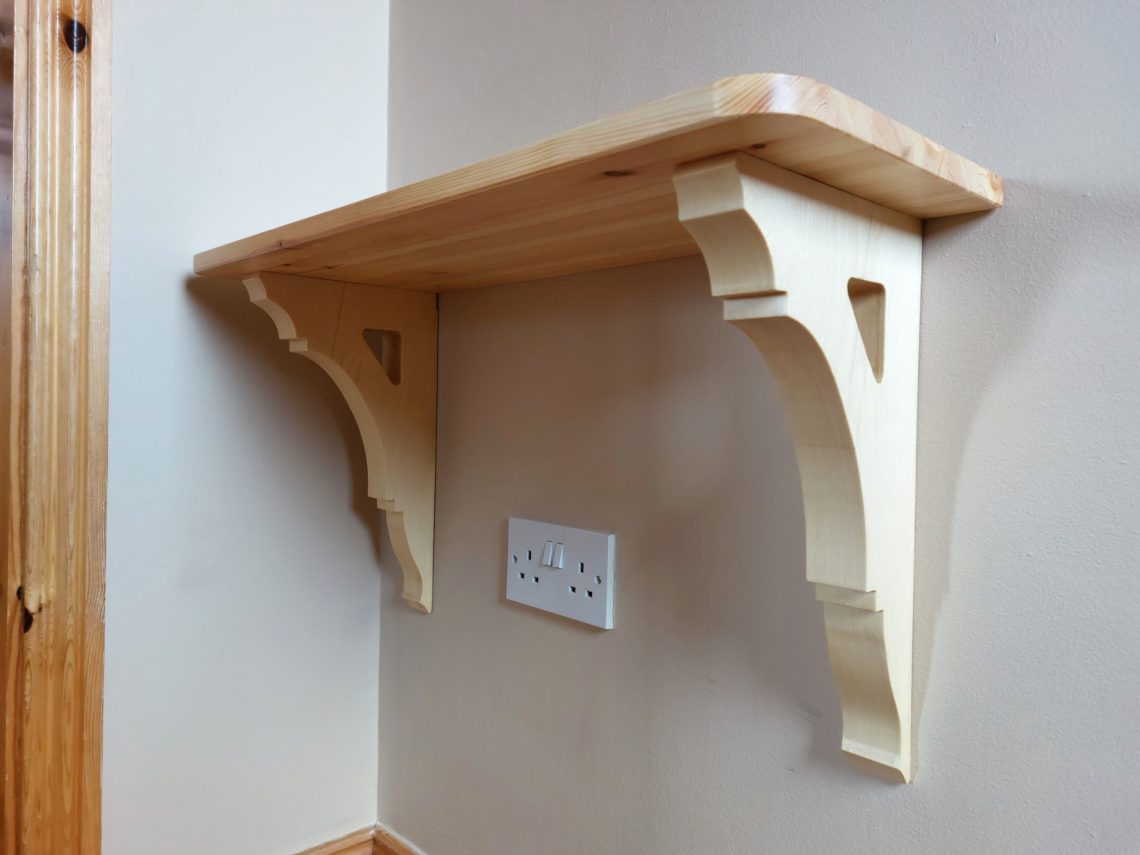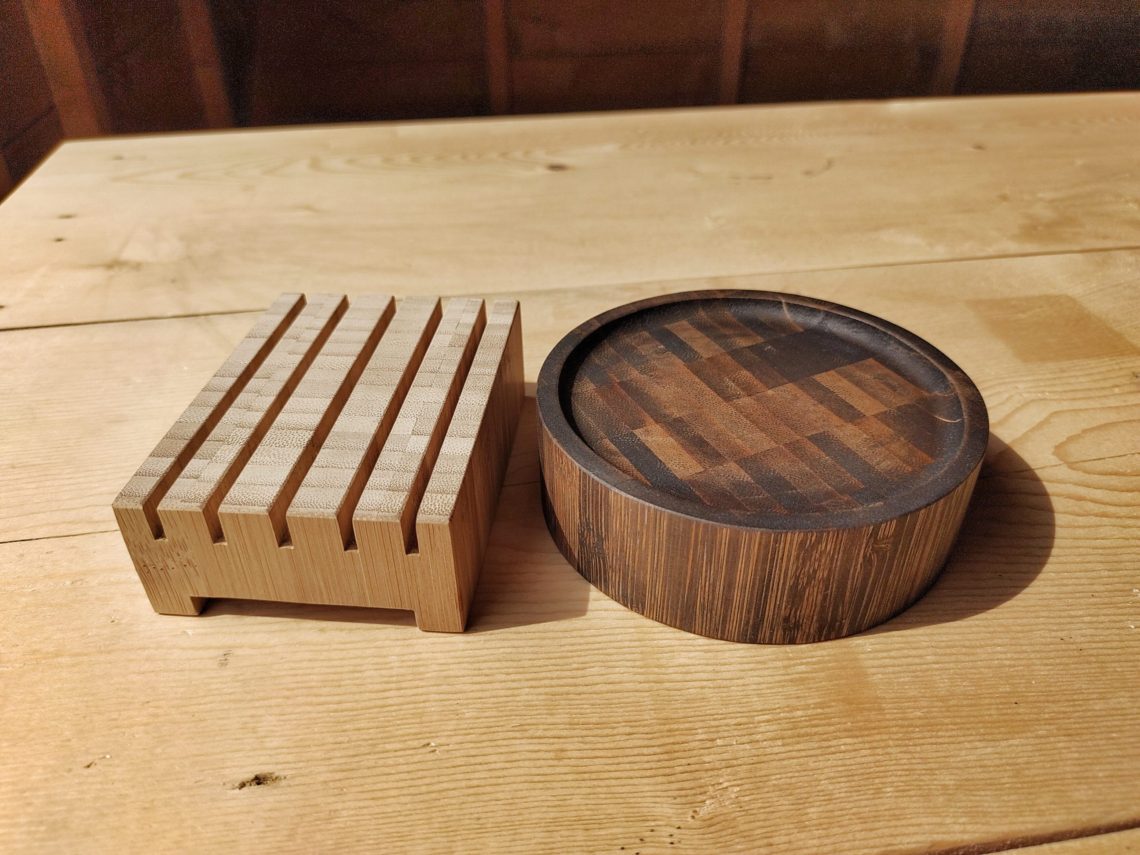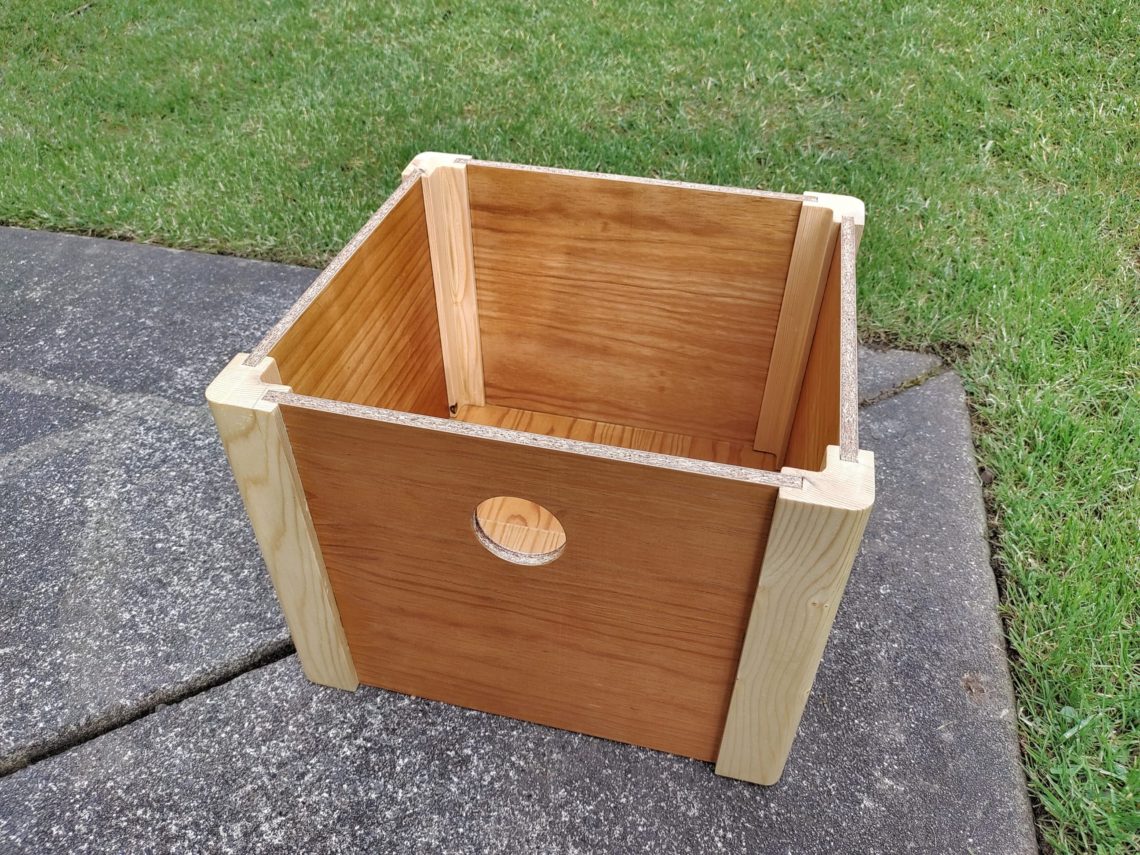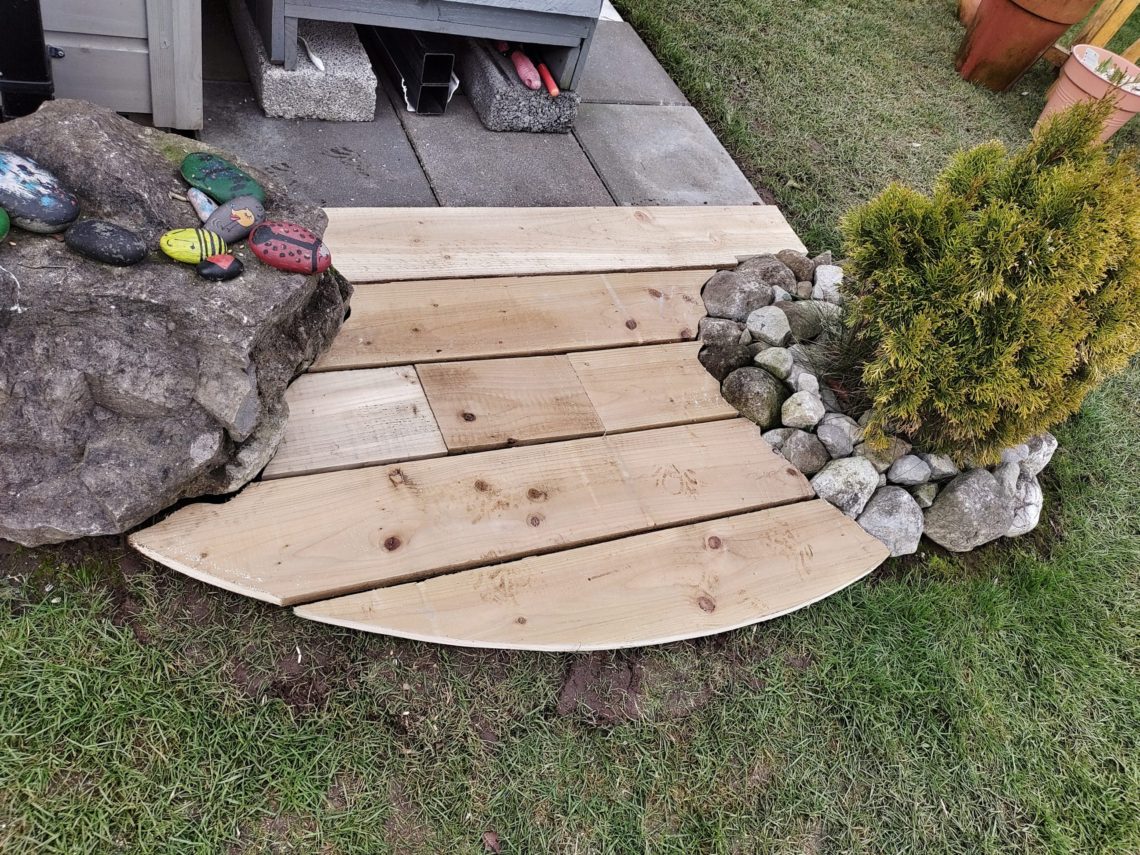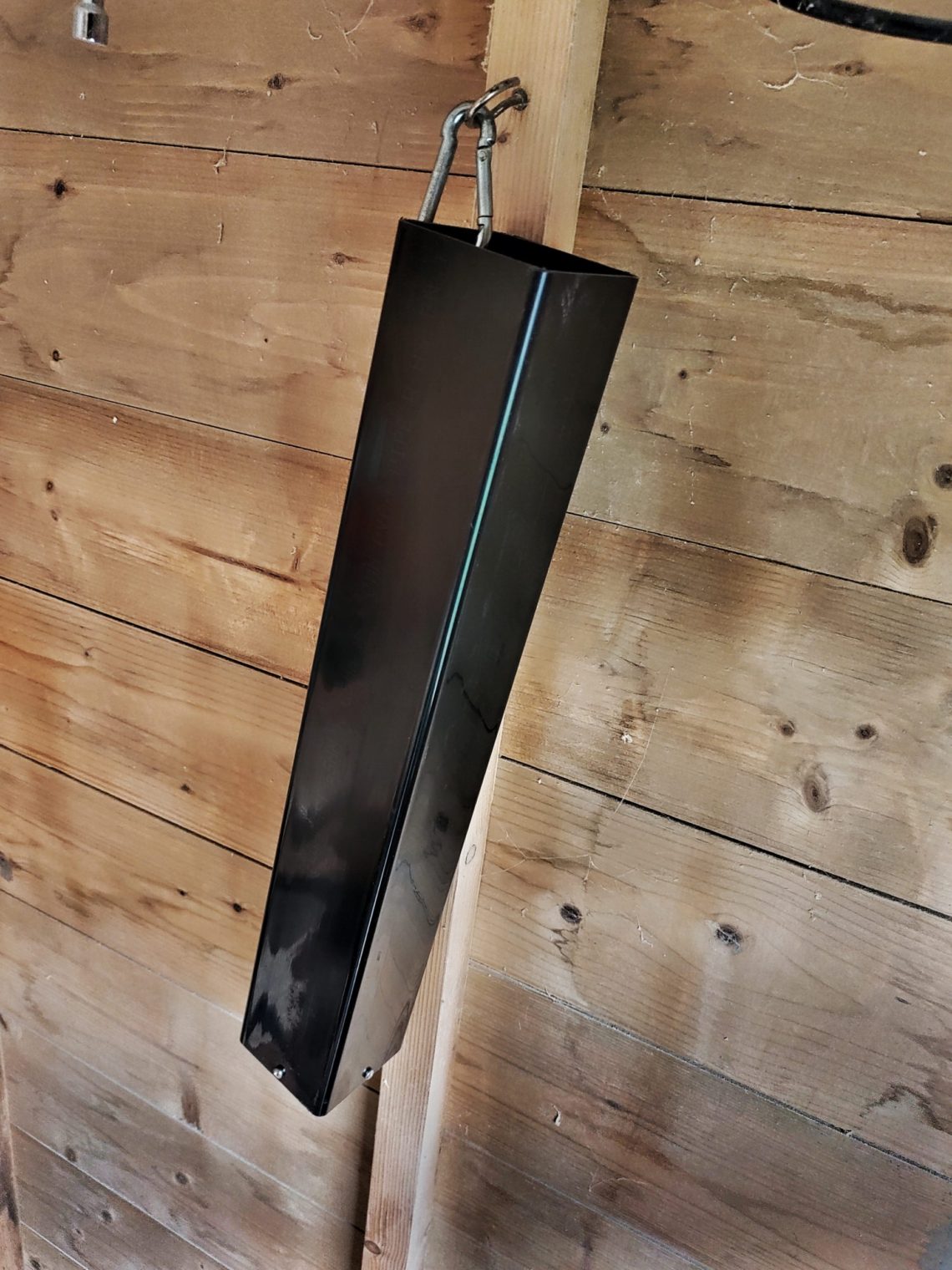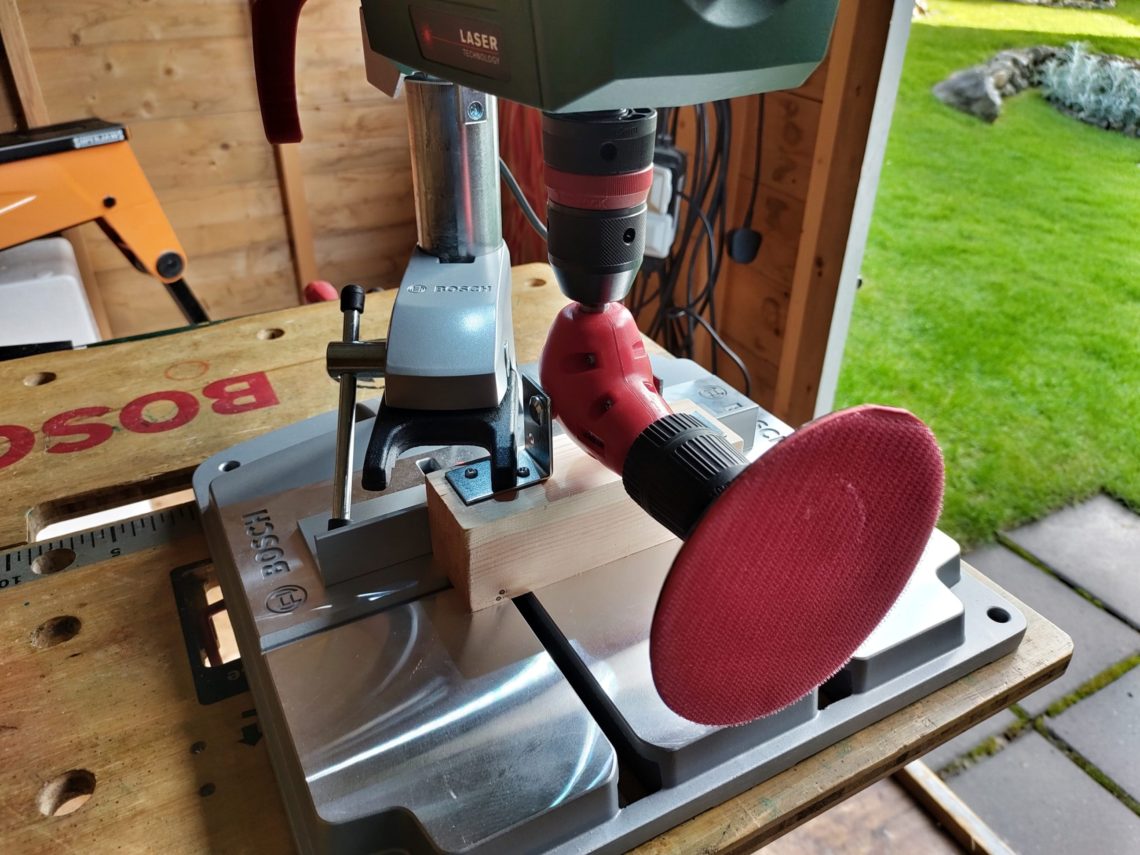-
Corbel shelf
Both corbels are made from upcycled material, but I saved some time by buying a board for the top instead of making it myself. The shelf is put together with dowels and glue and that way there are no visible fasteners, not to mention its mounting brackets that are also hidden from sight. The corbels are thick and long, they dominate the shelf visually, giving an illusion of sturdiness. Because the shelf is made of softwood, it’s naturally light and all the force that the brackets can take is left for what is going to be put on the shelf.…
-
Reusing a cracked chopping board
It was a beautiful, bamboo chopping board, unfortunately, due to the heat and moisture, it cracked along 2 lines. I didn’t want to reglue it because it looked perfect for some small projects and experiments. I made what I needed in my household – a simple coaster and a soap tray. There was still some crack-free board surface left to use, but I stopped at 2 projects and put the board aside for a while. I started from the coaster, as it was a more urgent thing to have, using a template that I made in the past. I had…
-
Over-engineered metal-free box
This box is made out of 100% upcycled materials, the walls and the bottom of this box are veneered chipboard sheets, reclaimed material that came from an unwanted piece of furniture. Solid timber corners were made in the past, using a router and 2 common bits, I made a few of them and they were put aside and waited for the right project. They were originally a single board used on a construction site. The bottom rails were off-cuts from another project – basically just scraps. Everything is glued together – which makes the box 100% metal-free. Even during the…
-
Half-lap picture frames
There are a few advantages of using half-lap joints instead of mitre joints in picture frames. They’re easy to make, they’re strong and don’t require any reinforcements, their appearance is attractive, there are no inconsistent and widening gaps in joints over time and they’re easy to clamp during the glue-up process. The timber used in the project was reclaimed, I cut it to size and planed it myself. Here’s how I made these 2 frames: The preparation of the timber was as usual: rip-cutting, planing and cutting to a rough length. I had to adjust the size of the smaller…
-
On-ground decking
I am not sure if I can call it decking, it’s just a platform lying directly on the ground. All the boards are connected with a steel banding, so I guess I can call it a platform. Of course, decking can be laid on the ground, but usually not as directly as mine. In most cases, there is weed control fabric below a layer of gravel – decking sits on top of these two. I made it cheap, using scraps of pressure-treated wood. No fabric, no gravel. I don’t like using fabric, it allows drainage but sooner or later weeds…
-
Long blade storage tote
It’s made from an old PVC gutter and a scrap piece of timber. It can be put on the table upright or flat, but to make it more portable and versatile, I drilled a hole at the top for a carabiner hook. I use this tote for long jigsaw and reciprocating saw blades, they’re 250 – 300 mm long (10 – 12 inches), but it can be used for everything else. What I like the most about this project is the idea of upcycling scraps into something useful. There’s no need to throw away all the off-cuts from the shop…
-
Vertical-to-horizontal drill press jig
This jig comes in handy when I have to process cut bottles. I stick sanding discs to the velcro pad and polish the glass. For any other tasks i.e. wood and metal, I use my disc/belt sander, but for glass, I like to sand through the grits, from coarse to very fine. That wouldn’t be easy with a bench sander as it uses self-adhesive discs and offers no control over the sanding speed. Glass is different and it likes to be sanded slowly – excessive heat can crack the glass and melt the velcro backing pad. That’s why I built…
-
Tape holder
Its body was made from a plastic pipe, that was part of an intake/exhaust gas boiler shaft. However, not its origin, but its diameter was more important to me, the pipe could go inside the masking tape roll and surprisingly it could store some insulation tape inside. The scrap pipe I had was too long, I had to cut it to size using a hand saw and a mitre box, and next, all the sharp edges had to be sanded down. Once that was done I started drilling holes. As that project was very simple, there were only 2 steps…
-
Metal paper plane
I only guess that everyone would like to ask a question: “Does it fly?”. Just in case if anyone does – I haven’t tried. It could and probably would fall down, leaving scratches on the painted surface. It would be also too dangerous for anyone around. It wasn’t my intention to build a weapon, I wanted to make something that I used to make every day when I was a little boy. Only this time I used more advanced material. Childhood memories and the beauty of flying – that’s all this project is about. Recalling happy memories – one of…
-
Purple portable lamp
This project is a remake of something that was made earlier and wasn’t used too much. It was called a bottleneck vessel and was made from an old champagne bottle. Cutting and polishing the bottle was briefly explained in that post, so I can now focus on part 2 of the making. The easiest way to insert a cable to the inside, and not do it from the top, obviously, is to drill a hole on the side. Another way is to cut off the bottom as I do every so often. But in this project, I drilled a hole…
